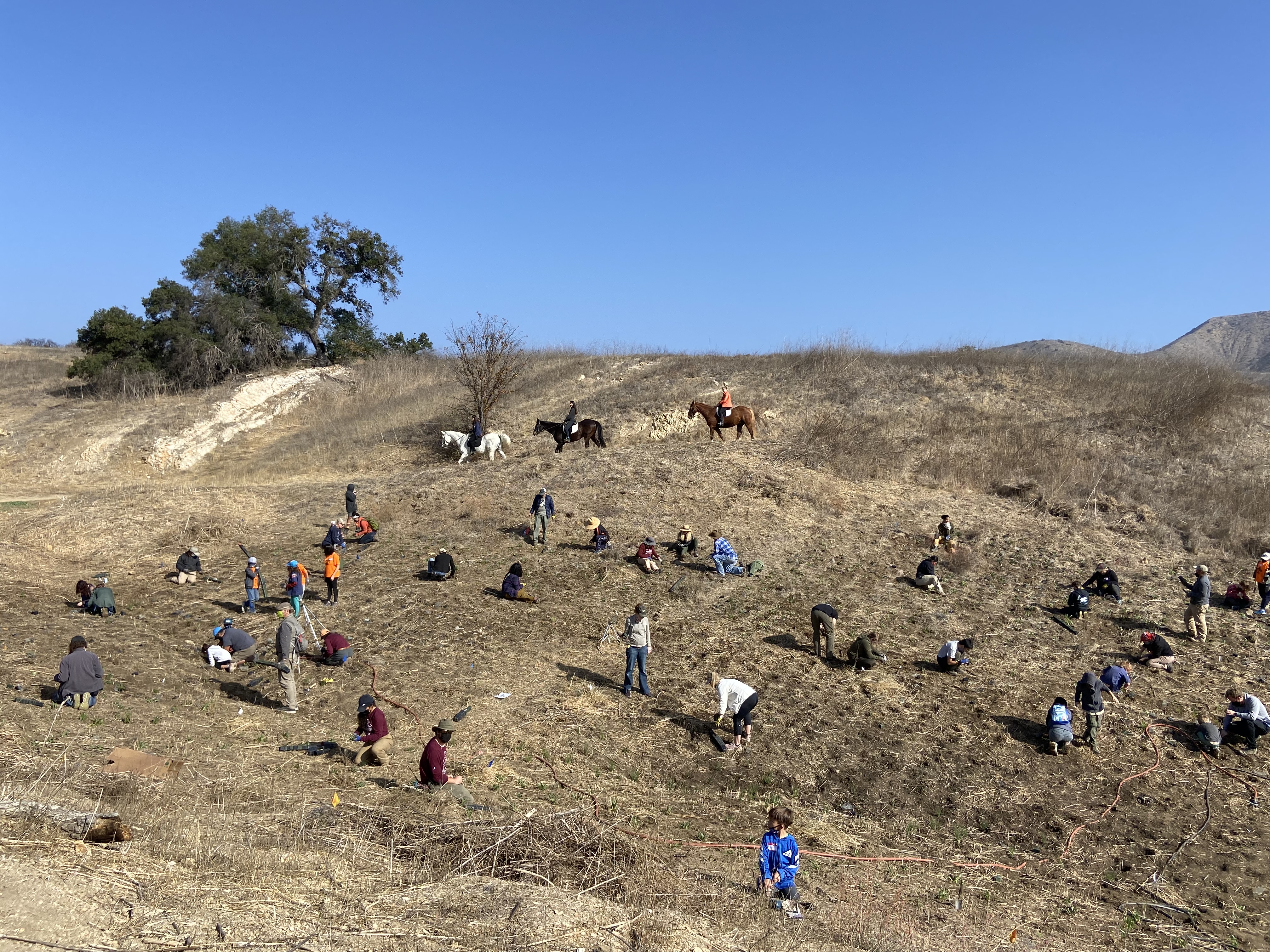News Release
You are viewing ARCHIVED content published online before January 20, 2025.
Please note that this content is NOT UPDATED, and links may not work. For current information,
visit https://www.nps.gov/aboutus/news/index.htm.

National Park Service
|
Subscribe
|
Contact: Ana Beatriz Cholo, 805-750-9356
THOUSAND OAKS, Calif. – After 7,000 hours of participation from 3,000 volunteers, the park’s largest ever restoration project to restore 100,000 native plants in the Santa Monica Mountains is at the finish line, according to National Park Service officials.About 30 high school students from high schools in East Los Angeles will join dozens of other volunteers on Saturday, March 25, for the final planting event that will be held at Rancho Sierra Vista in Newbury Park starting at 9 a.m.
The park embarked on the two-year project, funded by Snap, Inc., the Santa Monica Mountains Fund, and Re:wild, to restore 100,000 native plants (10,000 trees and 90,000 herbs and shrubs) to five sites in Santa Monica Mountains National Recreation Area.
“Nobody’s doing this kind of work – at least on a collective scale,” said Joey Algiers, a restoration ecologist who has led the project. “Through long-term monitoring, we discovered that we had lost about 100,000 riparian trees prior to the November 2018 Woolsey Fire. The reason for that includes prolonged drought and other wildfires.”
Algiers said that when Woolsey came along, many more trees and other plants were burned and lost. Restoring plant communities became a goal for the park. All plants for this project were grown from seeds that were locally collected from the Santa Monica Mountains.
All the plants were grown in the park’s Rancho Sierra Vista native plant nursery. The park recruited volunteers and began planting in October 2021. The five sites of the project - Cheeseboro Canyon, Paramount Ranch, Peter Strauss Ranch, Rocky Oaks, and Rancho Sierra Vista - were all impacted by recent wildfires, including the Woolsey and Springs wildfires.
The tree planting strategy, according to Algiers, consisted of planting along riparian areas with perennial or seasonal creeks where water may exist underground. He said most of the planting has been done by volunteers, and much of the crew hired for the project were diverse youth.
The rebuilding of creek areas provides critical habitat for a whole suite of animals, including birds of prey, hawks, owls, etc. For predator mammals like bobcats and mountain lions riparian areas act as cover. As planted trees mature, their canopies connect to each other, providing a source for travel for small mammals and other wildlife.
Riparian areas provide high-quality habitat for a whole suite of diverse wildlife, Algiers said. Planting native trees is important, but biologists say they strived to create “plant communities,” which include native grasses, other herbs and shrubs. These plants support native trees like coast live oaks, valley oaks, willows, elderberries, California black walnuts, and western sycamores. Another goal of the project was to return these sites to habitat for sensitive species.
For example, one of the species in decline is the grasshopper sparrow, known to frequent two of the five restoration sites. This work is expected to improve habitat for the sparrow and other species of concern like the threatened monarch butterfly.
Algiers said this project brought diverse people together from all over the region and from all walks of life.
“We’re thankful to the thousands of dedicated volunteers who made this happen,” he said.
Santa Monica Mountains National Recreation Area (SMMNRA) is the largest urban national park in the country, encompassing more than 150,000 acres of mountains and coastline in Ventura and Los Angeles counties. A unit of the National Park Service, it comprises a seamless network of local, state, and federal parks interwoven with private lands and communities. As one of only five Mediterranean ecosystems in the world, SMMNRA preserves the rich biological diversity of more than 450 animal species and 26 distinct plant communities. For more information, visit nps.gov/samo.
###
Last updated: March 22, 2023
